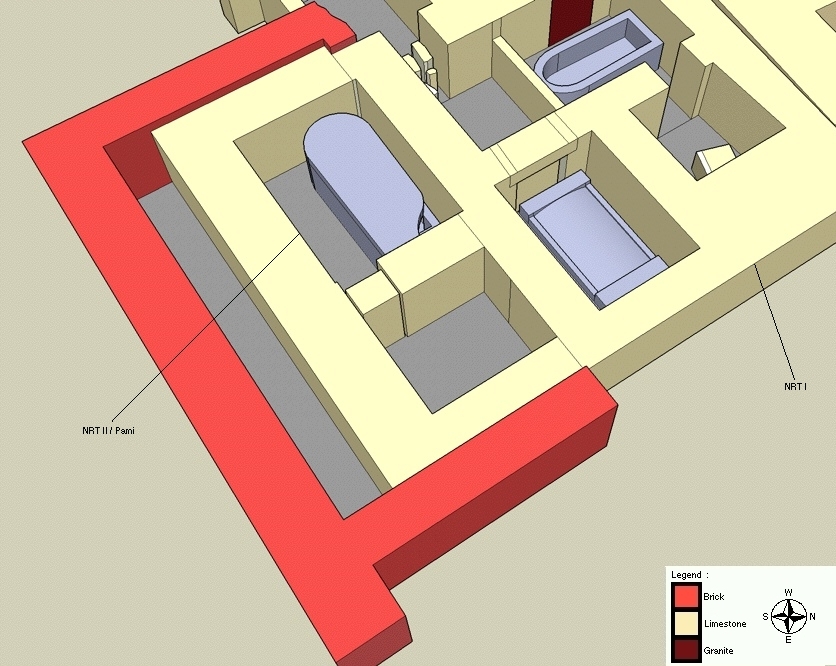Pami on:
[Wikipedia]
[Google]
[Amazon]
Usermaatre-setepenre Pami-meryamun ( Egyptian ''wsr-mȝʿt-rʿ stp-n-rʿ pȝ-my mrj-jmn'') was an
 According to stelae discovered from the Serapeum of Saqqara, an Apis bull was buried in the second year of Pami's reign. Pami's fourth year is known from Brooklyn papyrus ‘16.205.’ A small votive stela (Louvre
C 275) presumably from Memphis reports a religious ceremony dated to Year 6 of king Pami's reign.
On a reused stone block from an enclosure wall at Heliopolis,
According to stelae discovered from the Serapeum of Saqqara, an Apis bull was buried in the second year of Pami's reign. Pami's fourth year is known from Brooklyn papyrus ‘16.205.’ A small votive stela (Louvre
C 275) presumably from Memphis reports a religious ceremony dated to Year 6 of king Pami's reign.
On a reused stone block from an enclosure wall at Heliopolis,
Des annales héliopolitanes de la Troisième pèriode intermédiaire
, ''BIFAO'' 98: 31-56 Pami, therefore, could have reigned for nearly 7 full years.
{{authority control 770s BC deaths 8th-century BC pharaohs Pharaohs of the Twenty-second Dynasty of Egypt Year of birth unknown
ancient Egypt
Ancient Egypt () was a cradle of civilization concentrated along the lower reaches of the Nile River in Northeast Africa. It emerged from prehistoric Egypt around 3150BC (according to conventional Egyptian chronology), when Upper and Lower E ...
ian pharaoh
Pharaoh (, ; Egyptian language, Egyptian: ''wikt:pr ꜥꜣ, pr ꜥꜣ''; Meroitic language, Meroitic: 𐦲𐦤𐦧, ; Biblical Hebrew: ''Parʿō'') was the title of the monarch of ancient Egypt from the First Dynasty of Egypt, First Dynasty ( ...
of the 22nd Dynasty who ruled for 7 years. "Pami" in Egyptian, means "the Cat" or "He who belongs to the Cat astet.
Identity
Pami's precise relationship with his immediate predecessorShoshenq IV
Hedjkheperre Setepenre Shoshenq IV was an ancient Egyptian ruler of the Twenty-second Dynasty of Egypt, 22nd Dynasty, between the reigns of Shoshenq III and Pami. In 1986, David Rohl proposed that there were two king Shoshenqs bearing the prenome ...
is unknown. He is attested as the father of Shoshenq V in a stela from the Serapeum of Saqqara, dating to the eleventh year of the latter's reign.
Pami was once assumed to be Pimay, the third son of Shoshenq III who served as the "Great Chief of Ma" under his father. However, the different orthographies of their names (Pami vs. Pimay) prove that they were 2 different individuals.
The name Pami translates as 'The Cat' in Egyptian whereas the name Pimay means 'The Lion.' Pami's name was mistakenly transcribed as Pimay by past historians based upon the identification with Shoshenq III's son. While a previous Dynasty 22 king held the title 'Great Chief of the Ma' before ascending the throne–namely Shoshenq I–Shoshenq III's son, if Pimay did indeed outlive his father, he should have then succeeded his father as king rather than the obscure Shoshenq IV who is not attested as a son of Shoshenq III. Consequently, it seems certain that Shoshenq III outlived all of his sons through his nearly four-decade-long reign.
While a minority of scholars hold to the traditional view that Pami was Pimay, no archaeological evidence proves that Pami was ever a son of Shoshenq III. Pami may have been a son of his obscure predecessor Shoshenq IV instead.
Reign length
 According to stelae discovered from the Serapeum of Saqqara, an Apis bull was buried in the second year of Pami's reign. Pami's fourth year is known from Brooklyn papyrus ‘16.205.’ A small votive stela (Louvre
C 275) presumably from Memphis reports a religious ceremony dated to Year 6 of king Pami's reign.
On a reused stone block from an enclosure wall at Heliopolis,
According to stelae discovered from the Serapeum of Saqqara, an Apis bull was buried in the second year of Pami's reign. Pami's fourth year is known from Brooklyn papyrus ‘16.205.’ A small votive stela (Louvre
C 275) presumably from Memphis reports a religious ceremony dated to Year 6 of king Pami's reign.
On a reused stone block from an enclosure wall at Heliopolis, annals
Annals (, from , "year") are a concise history, historical record in which events are arranged chronology, chronologically, year by year, although the term is also used loosely for any historical record.
Scope
The nature of the distinction betw ...
were found which document the deeds of various Twenty-second Dynasty pharaohs, however, only the section concerning Pami's reign had survived. It chronicles the king's annual donations to both the gods of the Great Temple of Heliopolis and to other local deities and temples in this city. While the ending of the block is damaged, the donation of the 7th regnal year can be clearly seen for Pami, with an entry for the subsequent year being possible.Tallet, P., Bickel, S. & Gabolde, M. (1998),Des annales héliopolitanes de la Troisième pèriode intermédiaire
, ''BIFAO'' 98: 31-56 Pami, therefore, could have reigned for nearly 7 full years.
References
External links
{{authority control 770s BC deaths 8th-century BC pharaohs Pharaohs of the Twenty-second Dynasty of Egypt Year of birth unknown